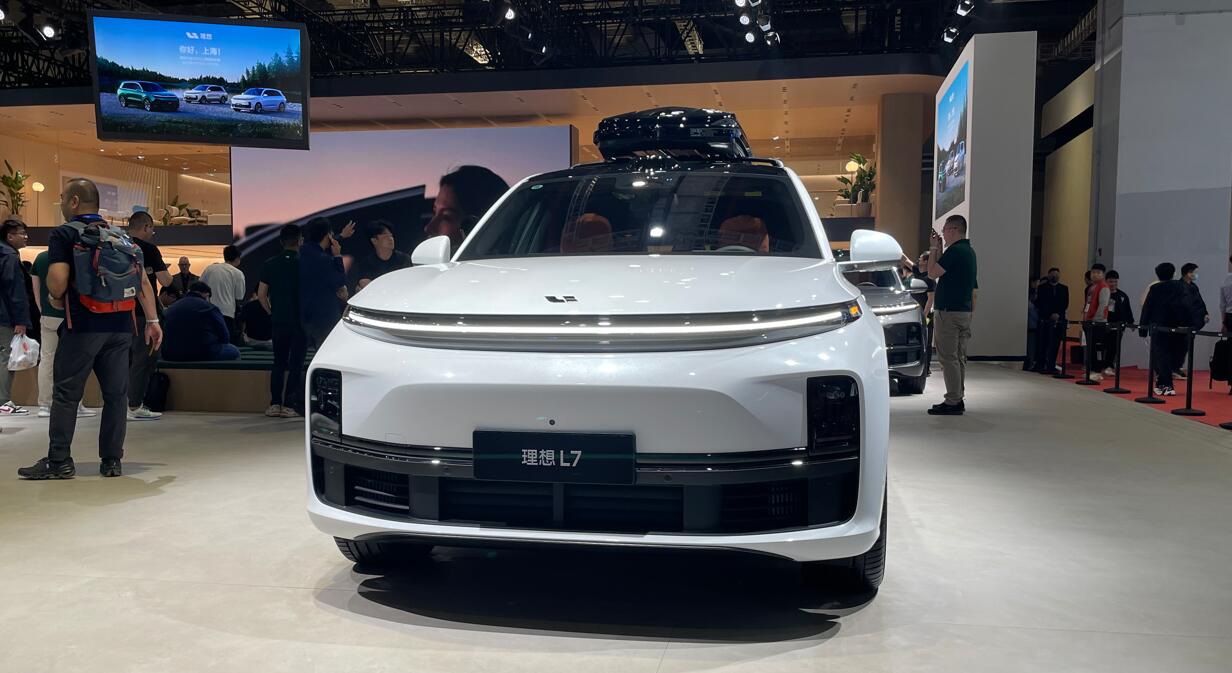The Deepal S7 is about the same size as the Tesla Model Y and is available in both BEV and EREV versions.

(Image credit: Deepal)
Changan Automobile's new energy vehicle (NEV) brand Deepal has launched an SUV that will compete with Tesla's (NASDAQ: TSLA) Model Y. Its first product is aimed at the Model 3 market.
Deepal officially rolled out the Deepal S7 at a launch event yesterday evening with a starting price of RMB 149,900 ($20,878), down RMB 20,000 from the pre-sale price announced on May 20 and well below the Model Y's RMB 263,900.
The Deepal S7 is available in two powertrain versions, including a battery electric vehicle (BEV) version, and an extended-range electric vehicle (EREV) version similar to Li Auto (NASDAQ: LI) vehicles. Deliveries of the new SUV are to begin on June 30.

The Deepal S7 EREV is available in three versions with starting prices of RMB 149,900, RMB 159,900 and RMB 169,900 respectively.
The Deepal S7 BEV is available in 2 versions with starting prices of RMB189,900 and RMB202,900 respectively.
The model's price range at the time of pre-sale was RMB 169,900 - RMB 239,900.
For comparison, the Tesla Model Y is currently offered in China in three versions -- an entry-level rear-wheel drive version, a dual-motor all-wheel drive long-range version, and a dual-motor all-wheel drive performance version -- with starting prices of RMB 263,900, RMB 313,900, and RMB 363,900, respectively.

The Deepal S7 is a mid-size SUV with a length, width and height of 4,750 mm, 1,930 mm and 1,625 mm, respectively, and a wheelbase of 2,900 mm.
The dimensions are similar to those of the Model Y, which measures 4,750 mm in length, 1,921 mm in width and 1,624 mm in height, and has a wheelbase of 2,890 mm.
Both versions of the Deepal S7 BEV are rear-wheel drive and feature a single electric motor with a maximum power of 160 kW and 190 kW, respectively, and a maximum torque of 320 Nm. They can accelerate from 0 to 100 km/h in 6.7 seconds and 7.5 seconds, respectively.

These two BEV versions are equipped with a power battery capacity of 66.8 kWh and 79.97 kWh, providing a CLTC range of 520 km and 620 km, respectively.
All three versions of the Deepal S7 EREV are powered by a 1.5 L engine with a maximum power of 70 kW. They all have an electric motor with a peak power of 175 kW and a peak torque of 320 Nm.
All three versions can accelerate from 0 to 100 km/h in 7.6 seconds, 7.6 seconds and 7.7 seconds, respectively.
They have a battery pack capacity of 18.99 kWh, 18.99 kWh and 31.73 kWh, providing a battery range of 121 km, 121 km and 200 km, respectively.

At full fuel and full charge, the three versions of the Deepal S7 EREV have a CLTC range of 1,040 km, 1,040 km, and 1,120 km, respectively.
Deepal, Changan's NEV brand announced in 2022, officially launched the Deepal SL03 sedan on July 25 last year, a competitor to the Model 3.
Unlike the Tesla Model 3, the Deepal SL03 is available in three forms of power -- a BEV version, an EREV version, and a version with a hydrogen fuel cell.
In May, Deepal delivered 7,021 units, bringing January-May deliveries to 33,585, although last month's delivery was 9.48 percent lower than April's 7,756 units.
Deepal's goals for 2023 include selling 200,000 vehicles and making both the SL03 and S7 hot sellers, the brand's CEO Deng Chenghao said in an interview with Auto Home in April.
Price wars are short-term actions, and car companies ultimately need to compete on product competitiveness, technology, branding, channels and service capabilities, Deng said in that interview.
"I think the whole industry will be sustainable only if there is a value war," he said.
($1 = RMB7.1794)


The post Changan's EV brand Deepal launches S7 SUV at about half price of Tesla Model Y appeared first on CnEVPost.
For more articles, please visit CnEVPost.


















